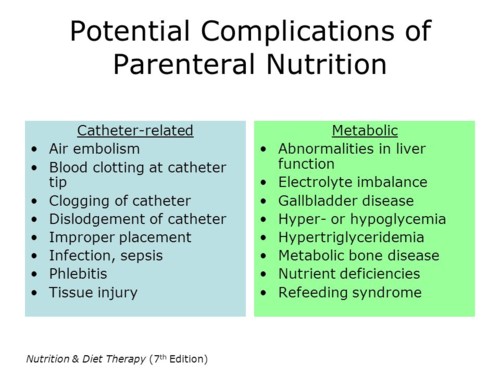The nurse is developing a food safety educational class for a group of parents. Which type of food is most likely to pose a threat of food poisoning after being stored in a refrigerator at 40°F (4.4°C) or below for more than two days?
Opened package of hot dogs.
Packaged of uncooked lamb chops.
Opened package of deli sliced meats.
Ground-up hamburger raw meat.
The Correct Answer is C
Choice A
Opened package of hot dogs is not correct. Hot dogs are processed and often contain preservatives that help extend their shelf life. However, it's still important to follow proper storage guidelines to ensure their safety.
Choice B
Packaged of uncooked lamb chops is not correct. Uncooked meats are generally safe if stored properly. The main concern arises when cooking and handling them, as raw meats can potentially cross-contaminate other foods if proper sanitation measures are not followed.
Choice C
Opened package of deli sliced meat is correct. Among the options provided, an opened package of deli sliced meats (option C) is most likely to pose a threat of food poisoning after being stored in a refrigerator at 40°F (4.4°C) or below for more than two days.
Deli sliced meats are considered a high-risk food for bacterial growth and foodborne illnesses. When meats are sliced and exposed to air, they have a larger surface area, making them more susceptible to bacterial contamination. While the refrigerator temperature of 40°F (4.4°C) helps slow down bacterial growth, it doesn't completely prevent it, especially if the food has been stored for an extended period of time.
Choice D
Ground-up hamburger raw meat is not correct. Similar to uncooked lamb chops, raw ground meat is generally safe when stored properly and handled with care. However, ground meats do have a larger surface area that can allow bacteria to grow more easily, which is why safe cooking practices are important.
Nursing Test Bank
Naxlex Comprehensive Predictor Exams
Related Questions
Correct Answer is C
Explanation
Choice A
Urinary ketones are not most important. Monitoring urinary ketones can provide information about the utilization of glucose and fat as energy sources. However, it is not the primary lab value to monitor in TPN administration.
Choice B
Serum protein is not most important. Monitoring serum protein levels is important to assess nutritional status, but it might not be as immediate a concern as serum osmolarity.
Choice C
Serum osmolarity is the most important. When caring for a client receiving total parenteral nutrition (TPN), monitoring serum osmolarity is most important. TPN is a highly concentrated solution containing various nutrients, and it is infused directly into the bloodstream. Serum osmolarity reflects the concentration of particles (such as electrolytes, glucose, and other solutes) in the blood. Monitoring serum osmolarity is crucial to prevent complications related to fluid and electrolyte imbalances that can arise from the administration of TPN.
Choice D
Capillary glucose is not the most important. Monitoring capillary glucose levels is important, especially in clients receiving TPN with added glucose. Hyperglycaemia is a potential complication of TPN. While glucose monitoring is important, it is secondary to monitoring serum osmolarity, which encompasses a broader range of solute concentrations.

Correct Answer is C
Explanation
Choice A
Low residue diet is incorrect. A low residue diet is typically recommended for individuals with gastrointestinal conditions like inflammatory bowel disease or diverticulitis. This diet limits high-fibre foods to reduce bowel movements and ease digestive stress. However, it might not be the best option for a client with stomatitis who is struggling to eat due to mouth pain.
Choice B
Mechanical soft diet is incorrect. A mechanical soft diet includes foods that are soft and easy to chew, but they aren't necessarily pureed. While this diet might be more comfortable to eat for some individuals, a client with severe stomatitis might still experience pain while chewing. A pureed diet is a step further in terms of texture modification and can be better tolerated by someone with significant mouth pain.
Choice C
Pureed regular diet is correct. Stomatitis is inflammation of the mouth and can cause pain and discomfort, making it difficult for the client to eat. In this case, a pureed regular diet would be the most suitable choice.
Choice D
High protein soft diet is incorrect. While a high protein diet is important for recovery, healing, and maintaining muscle mass, the texture of the diet is equally important for someone with stomatitis. A high protein soft diet might still involve foods that are challenging to eat due to mouth pain, and therefore, a pureed diet would be a better option in this case.

Whether you are a student looking to ace your exams or a practicing nurse seeking to enhance your expertise , our nursing education contents will empower you with the confidence and competence to make a difference in the lives of patients and become a respected leader in the healthcare field.
Visit Naxlex, invest in your future and unlock endless possibilities with our unparalleled nursing education contents today
Report Wrong Answer on the Current Question
Do you disagree with the answer? If yes, what is your expected answer? Explain.
Kindly be descriptive with the issue you are facing.
